No one and nobody should go to football match and not to come home. Rest in peace to all the victims of the Kanjuruhan incident, and our deepest condolences for anyone affected by the incident. It took us a while to compose ourself once we heard the news, especially as lifelong fans of football, (personally for Fahri it is Liverpool FC).
Prof. Ed Galea (University of Greenwich) said “The Indonesian Football disaster (Kanjuruhan Incident) is not a stampede, but police induced Crowd Crush” on his LinkedIn page. It has been well-recorded by news report and eye-witness accounts that law enforcement agents at the scene utilized tear gas [1], even expired ones [2] to initially control the crowd due to pitch invasions incidents post-match. Pitch invasion is not allowed and, in our opinion, cannot be justified in any reason. However, the use of tear gas in order to control the crowd inside stadium clearly broke FIFA regulation [3] in FIFA Stadium Safety and Security Regulation Article: 19(b), and law enforcer should have handled the situation without using excessive force.
Recently, The Indonesian Government’s Independent Fact-Finding Team (known as TGIPF), also concluded in their study that, indeed, the use of tear gas by law enforcement caused this induced crowd crush [4]. The use of tear gas, and other projectiles suggested by several news report [5] resulted in several crucial consequences.
- Significantly reduced visibility. Experts and tear gas manufacturers warn against using it indoors, where higher concentrations of the chemical can become trapped, and people may not be able to escape [6] due to reduced visibility both from the thick smoke, as well as reduced eye-sight from the chemicals. This also applies for semi-confined spaces, such as Stadium, and directly affects the evacuation movement of the occupants.
- Inducing chaos. Tear gas significantly reduces one’s capability to inhale properly, which causes panic. People also naturally wants to avoid any smoke or gas, which causes more panic.
These two deadly combinations resulted in a chaotic state where people frantically seeking refuge to either evacuate, or to at least breath fresh air. What happened afterwards, due to the final factor: Lack of Proper Evacuation Study, causes an Induced Crowd Crush. Especially since, as many eye-witness account and report suggested, several exit doors were compromised - either closed or partially closed during the incident [7].
Stadium is considered as a Large Assembly occupancy, and thus should follow the necessary provisions as guided by relevant standard. For football, the FIFA Stadium Safety and Security Regulation [3] is used as reference. Local regulation usually absorbs directly from this document, as is the case with PSSI – Regulasi Kesehatan dan Keselamatan [8]. PT LIB as the Indonesian Football League, created the LIGA 1 Regulasi [9] as the league regulation, but only refer to PSSI Local Regulation for Stadium Safety and Inspection. There is no technical information regarding Stadium Safety, just several points referring to PT LIB’s mandate to conduct stadium inspection at any point during the season. Same goes with PSSI Stadium Regulation [10], that has no technical information for evacuation. Other local regulation includes PERMENPORA (PERATURAN MENTERI PEMUDA DAN OLAHRAGA) NO. 7/2021 [11] on the Standard of Football Stadium and Football Field, Infrastructure and Facilities (STANDAR PRASARANA DAN SARANA STADION DAN LAPANGAN SEPAK BOLA). However, within the UK, the Green Guide [12] is usually the most referred to for Stadium Safety. Produced by the Government (Department for Culture, Media and Sport), the guide gives logical and detailed guideline to reduce the risk of fatality and make stadium event safe for everyone.
Comparative Study
A comparative study between FIFA Stadium Safety and Security Regulation 2021 [3], Green Guide [12], PSSI Regulasi Keselamatan dan Keamanan 2021 [8] and PERMENPORA 07/2021 [11] has been established for this article. Notable highlights, which will be discussed further, are as followed.
1. Stadium Capacity
It should be noted that Kanjuruhan Stadium do not utilize numbered seats for most of the viewing area, and instead used Concrete Bleachers.
Therefore, there is no Fixed Attendance Number and this causes the possibility of overcapacity. This is exactly what happened during the incident. Match Organizer admitted to print-out more tickets than the stadium capacity [13].
Comparative study shows that each regulation (FIFA, Green Guide, and PSSI) have the same method of determining the stadium maximum capacity, which consider Holding, Entry, Exit, and Emergency Capacity – whichever is the lowest. Green Guide even establishes P factor for the physical attribute of the venue and S factor which is the management capability, which will lead to the maximum capacity.
However, the PSSI Regulation which directly translate FIFA Regulation, define emergency capacity as ‘number of people that can safely negotiate the emergency evacuation routes and reach a place of safety or reasonable safety within the determined emergency evacuation time’.
This highlights the need for technical analysis, possibly involving Evacuation Computer Simulation. Because otherwise, the maximum capacity cannot be determined, as the lowest value cannot be chosen without a technical evacuation analysis. Which resulted in the question: How do they determined the maximum capacity in the first place, and how did it result to more tickets being available? And whether the existing evacuation system complies at the required level.
2. Flow Calculation
Another important step is to make sure that the flow of movement is within compliance with regulations. However, it can be seen that only Green Guide states the recommended Flow, with its prescriptive approach of BS EN 13200-1:2003 for flow capacity advises that, for emergency evacuation for a width of 1.2m on a stepped surface 79 people can reasonably exit in 1 minute (equal to 66 spectators per metre width per minute), and on a level surface 100 people can reasonably exit in 1 minute (equal to 82 spectators per metre width per minute).
FIFA mandates a Fire Risk Assessment to take into account the availability and location of one or more places of safety or reasonable safety, so that the emergency evacuation time can be calculated and to determine the capacity of the emergency exit system. Again, this highlights the need of Fire Risk Assessment, possibly involving performance-based, Evacuation Computer Simulation for in depth analysis.
Since there is no Flow Calculation Requirement from PSSI Regulation, hence there is no possible way of analysing compliance for existing Evacuation System for emergency. Within the PSSI Regulation, flow of evacuation movement was referred only in the Annex of Worked Example. PERMENPORA also do not refer to flow of evacuation movement. It refers to the door width to be considered as such so that emergency evacuation can be conducted within 5-8 minutes. Therefore, questions should be asked regarding the Stadium’s Evacuation and Emergency Flow Analysis (or lack thereof), and whether the existing evacuation system complies at the required level, especially considering the overcapacity during the incident.
3. Exit
Comparative Study shows that all regulations (FIFA, Green Guide, PSSI) mandates that all entry and exit points, including all emergency exit points and routes, remain unobstructed at all times.
Therefore, questions should be asked why, according to eye-witness and several reports of closed or partially closed exits during the incident [7].
The system should be designed in such a way that the loss of one emergency evacuation route or exit does not prevent access to alternative route or exits. The lack of alternative exit during the incident suggests that there has not been any detailed technical study for evacuation analysis.
4. Fire Risk Assessment
As previously mentioned, both FIFA and Green Guide requires a Fire Risk Assessment to be conducted by Competent Person.
There is no mention of Fire Risk Assessment in PSSI Regulation, and PERMENPORA only establishes the requirement of fire and evacuation facilities within a stadium.
Now, what has been reported by the media is the lack of proper Fire Risk Assessment and / or Evacuation Assessment of the Stadium. As reported, the Kanjuruhan stadium was last verified in 2020 [14]. The verification process itself, in our opinion, could not be considered as proper Fire and Evacuation Assessment as it only touches several points of interest, and possibly showing oversight on the basics of Maximum Capacity, Flow Analysis; as previously pointed out in previous points.
5. ‘Crowd Control Gas’
Comparative Study shows that the FIFA Regulation states “No firearms or “crowd control gas” shall be carried or used”.
However, it is worth highlighting that the PSSI Regulation, which throughout the document directly translate the FIFA Regulation, did not translate this sentence proportionally, and instead it is written down as “No Firearm or Crowd Dismissal Weapon shall be carried or used”. Thus, leaving out the crucial Crowd Control Gas – tear gas, as used in the Kanjuruhan Incident.
6. Steward Training
Comparative Study shows that only FIFA and Green Guide mandate proper training for Steward, which includes training for Crowd Dynamics and Management. PSSI Regulation and PERMENPORA do not refer to any technical skills or training required for Stewards.
How Do We Go Forward After Such a Tragic Incident?
Without proper risk assessment, risk mitigation, and proper ground management during sporting event, the Kanjuruhan incident is a disaster waiting to be happened to any stadium. Specifically, for Kanjuruhan incident, the use of tear gas undeniably plays a major part in inducing the crowd crush. Then it was compounded by crowd mismanagement due to lack of detailed risk management and sporadic policing, and oversight in the lack of technical Evacuation Analysis.
It is time to act. Every sporting facility which falls under the Large Assembly occupancy in Indonesia must be assessed with a proper risk assessment which include worst case scenario such as fire. Those risk assessment shall lead to crowd management and evacuation strategy. This should be mandated by the governing authority before any event can be held. Again, we are not talking about the stadium audit just to comply standards but rather an in-depth analysis to measure the risk and how the risk can be mitigated. As a planner or designers, tools such as Fire Dynamic Simulation and Evacuation Computer Modelling will provide data as baseline to develop crowd management and evacuation strategy during emergency situation. Fahri personally know for a fact that several international events mandated the use of Evacuation Computer Simulation as he was involved of such study for GBK Stadium, among others, for an international event. Why not mandate it for all of the stadium, regardless of the level of events?
Without collective consciousness of creating safe sporting venue, it can lead to very minimal – to none – risk assessment. No risk assessment means no risk management. No risk management can lead to the worst possible scenario. It is time to change, it is time to act. No lives should be lost due to ignorance and negligence.
References
[1] https://www.bbc.com/indonesia/articles/cz9341jv91zo
[3] FIFA Stadium Safety and Security Regulation. https://digitalhub.fifa.com/m/682f5864d03a756b/original/xycg4m3h1r1zudk7rnkb-pdf.pdf
[4] https://asumsi.co/post/71853/tgipf-pssi-harus-bertangung-jawab-atas-tragedi-kanjuruhan/
[6] https://www.nytimes.com/interactive/2019/08/18/world/asia/hong-kong-tear-gas.html
[7] https://theathletic.com/3679371/2022/10/12/kanjuruhan-stadium-disaster-justice/
[8] PSSI Regulasi Keselamatan dan Keamanan 2021 https://www.pssi.org/about/knowledge-center/regulasi
[9] PT LIB Regulasi Liga https://ligaindonesiabaru.com/uploads/files/regulasi-bri-liga-1-20202021.pdf
[10] PSSI Regulasi Stadion 2021 https://www.pssi.org/about/knowledge-center/regulasi
[11] PERMENPORA No. 07/2021. https://peraturanpedia.id/peraturan-menteri-pemuda-dan-olahraga-nomor-7-tahun-2021/
[12] Green Guide. https://sgsa.org.uk/greenguide/
Summary on FIFA, Green Guide, and PSSI Stadium Safety and Security Regulations








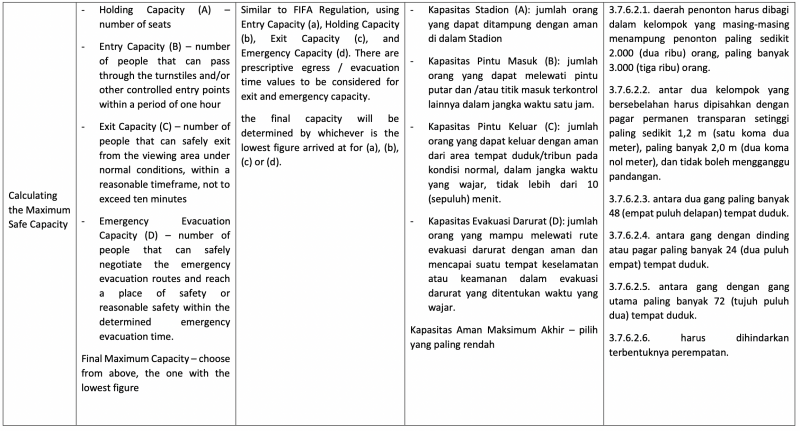
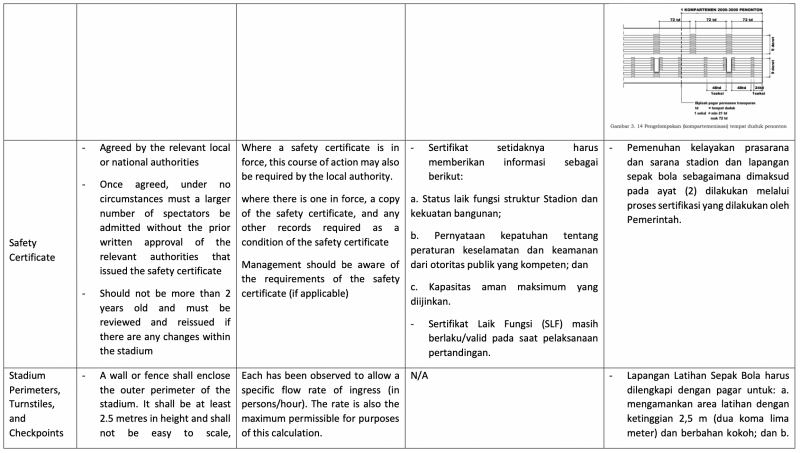
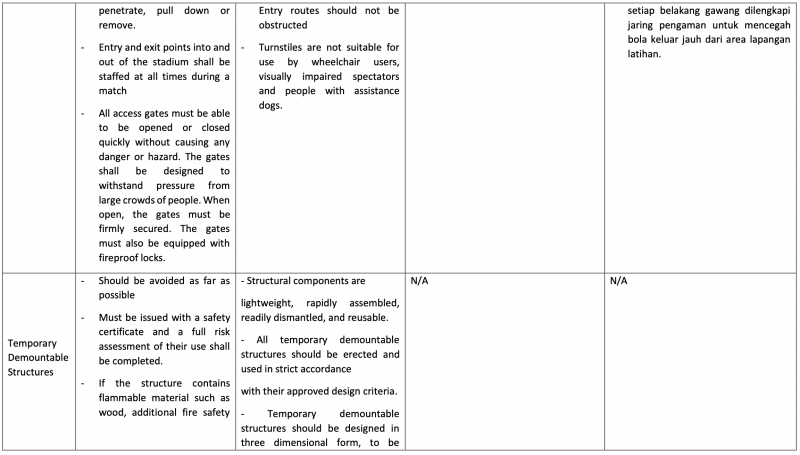

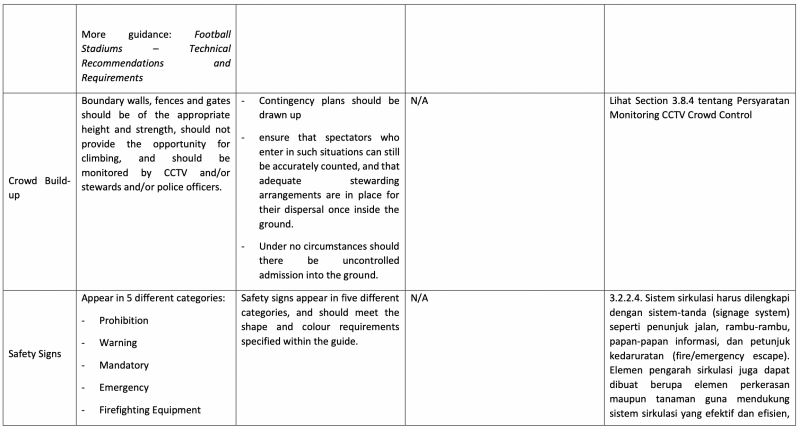




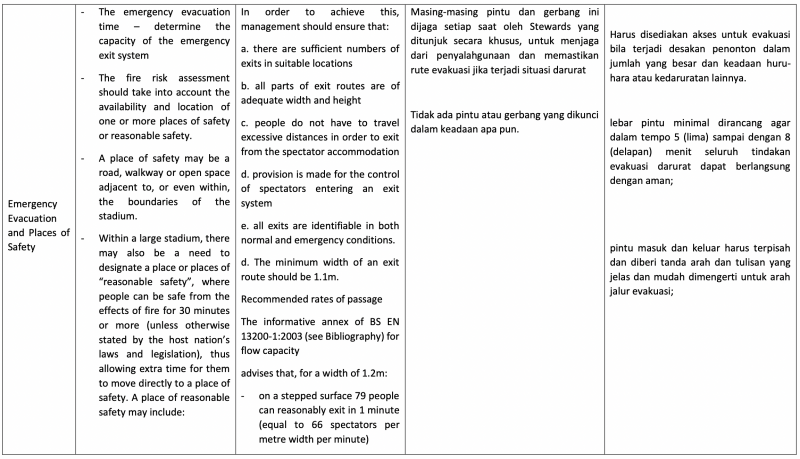

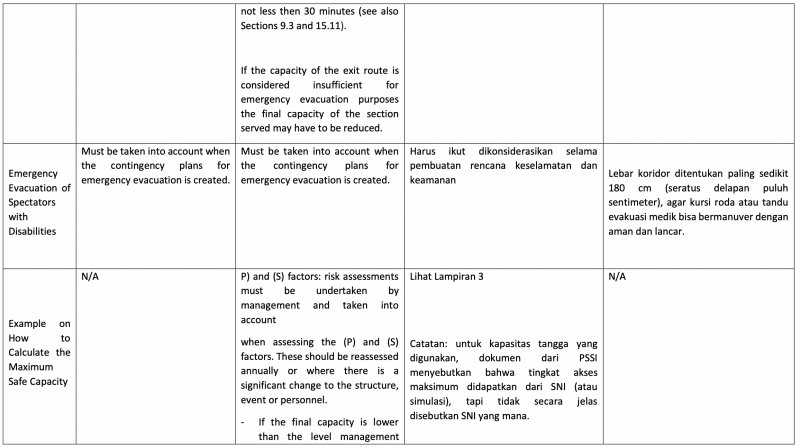
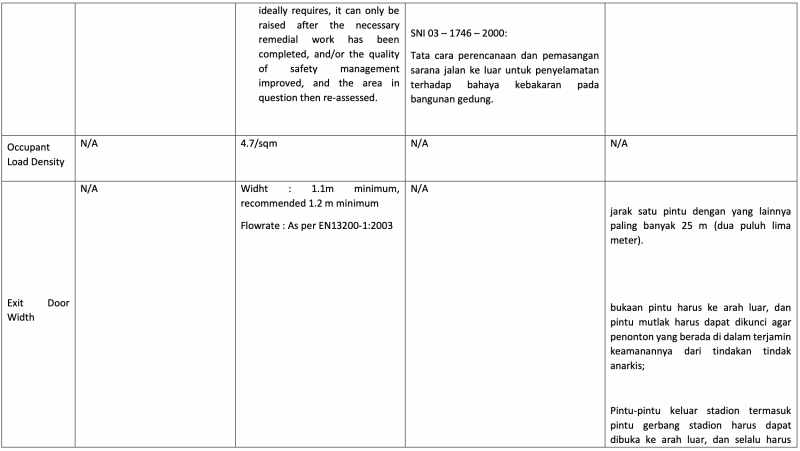




Writers: Fahri Ali Imran & Dana Lutfi Ilmansyah
33.01hsvg2fff06chd2an2eqsf4qz@mail4u.fun
aspernatur quis animi rerum eaque eaque sed voluptatem et explicabo. rerum et dicta molestias quia quo non. maiores nihil voluptate qui harum est consectetur minima debitis inventore illo quibusdam au